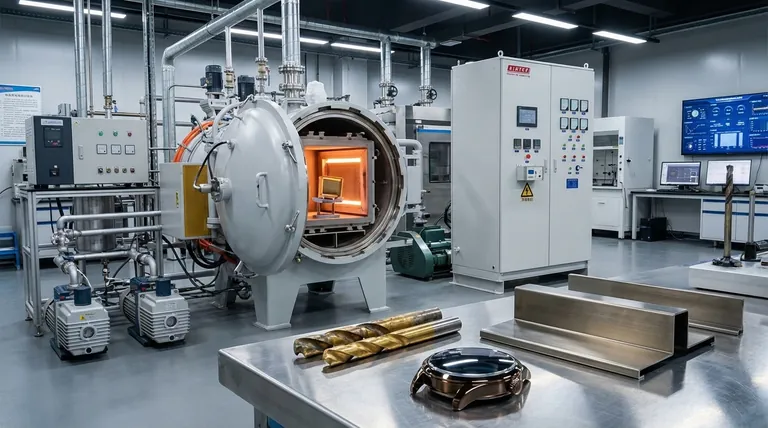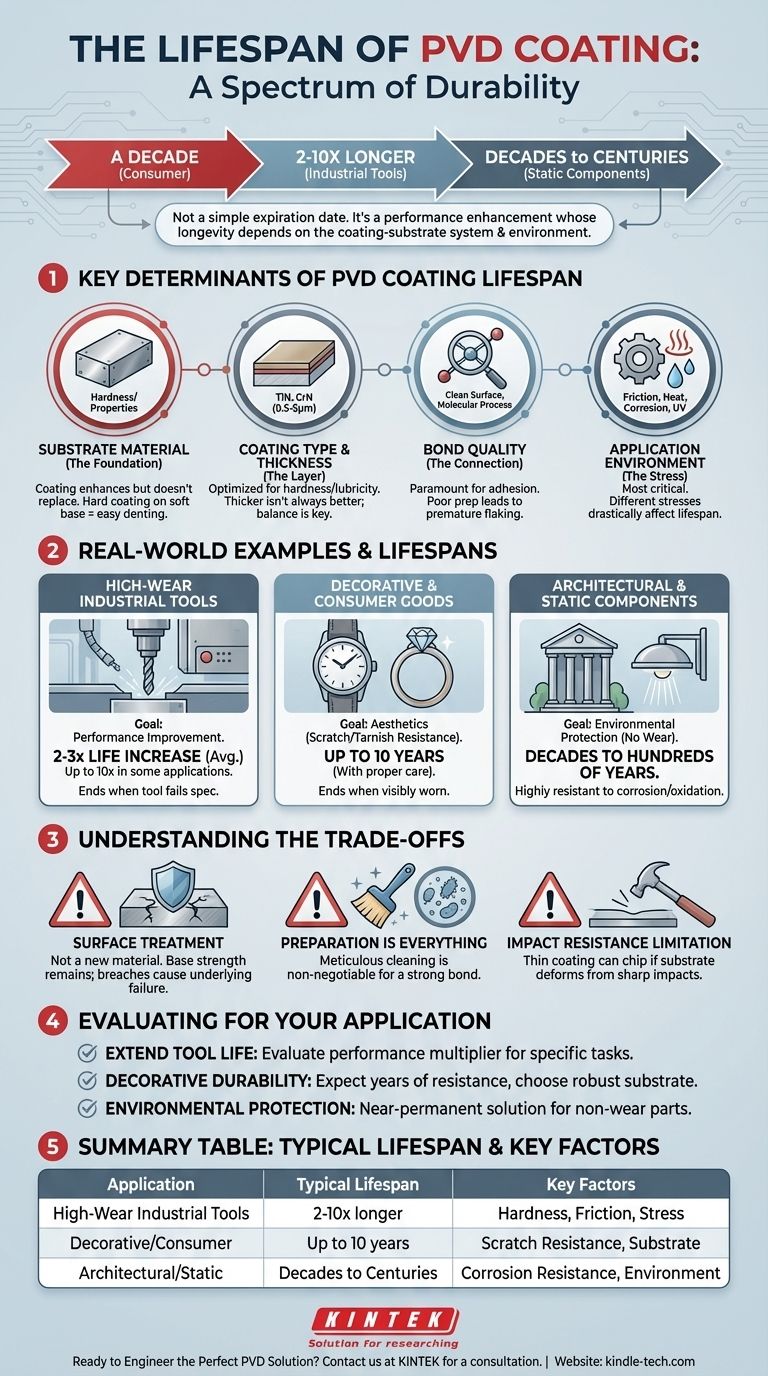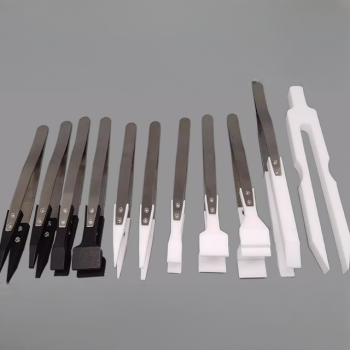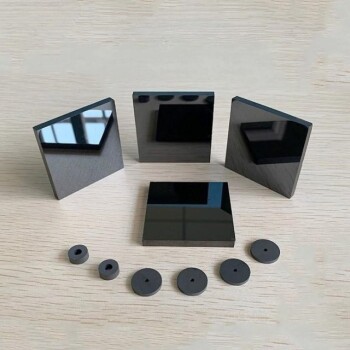The lifespan of a PVD coating is not a single number but a wide spectrum, ranging from a decade for consumer goods to potentially hundreds of years for static components. Its durability is fundamentally determined by the specific coating, the material it is applied to, and the environmental stress it endures throughout its use.
The central takeaway is this: Stop thinking of PVD coating life as a simple expiration date. Instead, view it as a performance enhancement whose longevity is a direct function of the coating-substrate system and its operational environment.

What Determines PVD Coating Lifespan?
The question isn't how long the coating "lasts" in isolation, but how long it performs its intended function—be it wear resistance, corrosion protection, or aesthetics—in a specific application. Several interdependent factors dictate this outcome.
The Substrate Material is the Foundation
The properties of a PVD coating are deeply connected to the underlying material, or substrate. The coating enhances the substrate's properties but does not replace them.
For example, a hard Titanium Nitride (TiN) coating on a soft aluminum substrate will still dent easily, as the base material will deform under impact. The same coating on hardened steel results in a much more durable system.
The Type and Thickness of the Coating
PVD coatings are incredibly thin, typically between 0.5 and 5 microns. The specific material chosen for the coating (e.g., TiN, CrN) is selected for properties like hardness, lubricity, or corrosion resistance.
While thickness plays a role, simply applying a thicker coat is not always better. The thickness is engineered for the application to balance performance with the risk of internal stress or brittleness.
The Quality of the Bond
The bond strength between the coating and the substrate is paramount. PVD is a molecular-level process, but its effectiveness depends on a perfectly clean and prepared surface.
Any failure in the surface preparation can lead to poor adhesion, causing the coating to flake or peel long before it would have worn away.
The Application's Environment
This is the most critical factor. The operational environment dictates the types of stress the coating will face.
A coating on a cutting tool endures extreme heat, friction, and wear. A coating on a watch case faces abrasion and skin oils. A coating on an architectural fixture primarily faces oxidation and UV exposure. Each scenario results in a completely different lifespan.
Lifespan in Context: Real-World Examples
To understand durability, we must look at specific use cases. The definition of "life" changes dramatically between them.
For High-Wear Industrial Tools
In manufacturing, lifespan is measured by performance improvement. A PVD-coated cutting tool may see its operational life increase by 2 to 3 times on average.
In some applications, improvements can exceed 10 times the life of an uncoated tool. Here, the coating's "life" ends when it has worn enough that the tool no longer cuts to specification.
For Decorative and Consumer Goods
For items like jewelry, watches, or fixtures, durability is about aesthetics. The goal is resistance to scratches, corrosion, and tarnish.
With proper application and reasonable care, a PVD coating on jewelry can maintain its appearance for up to 10 years. Its life ends when the finish is visibly scratched or worn through.
For Architectural or Static Components
When PVD is used for environmental protection on a part that experiences no wear, its lifespan can be immense.
Because the coating is highly resistant to corrosion and oxidation, it can protect the underlying substrate for decades, potentially hundreds of years, in a stable environment.
Understanding the Trade-offs
While incredibly effective, PVD coatings are not a universal solution. Understanding their limitations is key to using them successfully.
It's a Surface Treatment, Not a New Material
A PVD coating will not increase the base strength of a component. A steel part will still rust if the coating is breached by a deep scratch, and a titanium part will still have the same fatigue limits as before, though the coating can improve its surface endurance.
Preparation is Everything
The PVD process itself is only part of the equation. The cost and time spent on meticulous surface cleaning and preparation are non-negotiable for achieving a strong, lasting bond. Skimping on this step guarantees premature failure.
Impact Resistance Can Be a Limitation
While extremely hard and wear-resistant, the thin nature of PVD coatings means they can be damaged by sharp impacts. A significant blow can cause the substrate to deform, leading the harder coating to chip.
How to Evaluate PVD for Your Application
To make the right choice, align the coating's strengths with your primary goal.
- If your primary focus is extending tool life: Evaluate PVD coatings based on the performance multiplier they offer for your specific cutting or forming application.
- If your primary focus is decorative durability: Expect years of superior resistance to scratches and tarnish, but select a robust substrate to prevent dents that could damage the coating.
- If your primary focus is environmental protection: For components without mechanical wear, PVD is a near-permanent solution for preventing corrosion and oxidation.
Ultimately, the longevity of a PVD coating is a direct result of engineering the right coating system for a clearly defined task.
Summary Table:
| Application Type | Typical Lifespan | Key Factors |
|---|---|---|
| High-Wear Industrial Tools | 2-10x longer life | Coating hardness, friction, operational stress |
| Decorative/Consumer Goods | Up to 10 years | Scratch resistance, substrate quality, care |
| Architectural/Static Components | Decades to hundreds of years | Corrosion/oxidation resistance, stable environment |
Ready to Engineer the Perfect PVD Coating Solution for Your Needs?
PVD coating lifespan is not a one-size-fits-all metric—it's a carefully engineered outcome. At KINTEK, we specialize in matching the right PVD coating and substrate system to your specific application, whether you're aiming to extend tool life, enhance decorative durability, or ensure long-term environmental protection.
Our expertise in lab equipment and consumables ensures that your components receive the highest quality surface treatment for maximum performance and longevity. Don't leave your coating's durability to chance.
Contact us today for a consultation and discover how KINTEK can enhance your product's lifespan and performance.
Visual Guide

Related Products
- Graphite Vacuum Continuous Graphitization Furnace
- High Pressure Laboratory Vacuum Tube Furnace Quartz Tubular Furnace
- Custom PTFE Teflon Parts Manufacturer for PTFE Tweezers
- 2200 ℃ Graphite Vacuum Heat Treat Furnace
- Vacuum Heat Treat and Molybdenum Wire Sintering Furnace for Vacuum Sintering
People Also Ask
- What is the temperature resistance of graphite? Unlocking Its High-Temp Potential in Your Lab
- How well does graphite transfer heat? Unlock Superior Thermal Management for Your Electronics
- Why can graphite withstand heat? Unlocking Its Extreme Thermal Stability for Your Lab
- How is synthetic graphite manufactured? A Deep Dive into the High-Temperature Process
- Can graphite withstand high-temperature? Maximizing Performance in Controlled Atmospheres



















